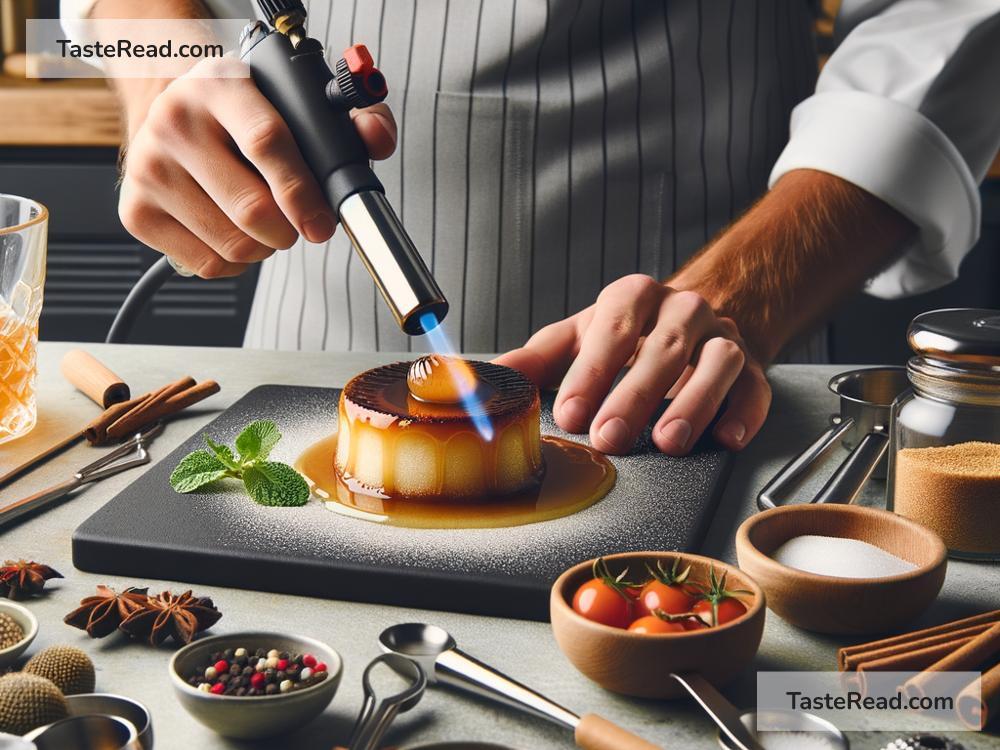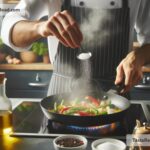The Science of Cooking with Chemical Innovation: Techniques and Tips
Cooking isn’t just about putting ingredients together and hoping for a tasty meal—it’s about understanding how those ingredients interact. While it might seem like magic when a loaf of bread rises or meat caramelizes, it’s actually science at play. In the kitchen, chemistry helps us turn raw ingredients into flavorful dishes. In this blog, we’ll explore some techniques and tips that use chemical innovation to improve your cooking skills—all explained in simple terms!
Why Chemistry Matters in Cooking
Cooking is full of chemical reactions. These reactions involve transforming molecules, breaking bonds, and creating new ones—all triggered by heat, acids, or time. Chemistry answers questions like:
- Why does bread rise?
- Why does a steak taste better when seared?
- How do eggs turn solid when cooked?
By learning a little food science, you can make adjustments to your cooking techniques and get consistently better results.
The Maillard Reaction: The Art of Browning
One of the most famous chemical processes in cooking is the Maillard reaction. This occurs when proteins (amino acids) and sugars in food react under heat, creating rich, complex flavors and golden-brown colors. The Maillard reaction is responsible for the crust on bread, the deep flavor of roasted coffee, and the savory taste of a seared steak.
How to Do It Right:
– Use high heat to kickstart the Maillard reaction. For example, when cooking meat, use a hot pan or grill.
– Pat ingredients dry first to avoid steaming, which can slow down browning.
– Don’t overcrowd the pan; too much food releases water and stops the reaction.
– Add a touch of sugar to help speed up browning, especially for vegetables.
Fermentation: The Power of Friendly Microbes
Fermentation is a chemical process where bacteria, yeast, or other microorganisms break down sugars. This process helps create foods like yogurt, bread, and cheese, as well as fermented sauces like soy sauce. Fermentation not only adds unique flavors but also improves digestibility and nutritional value.
How to Experiment with Fermentation:
– Try making your own fermented foods. For example, kombucha is made by adding a SCOBY (a symbiotic culture of bacteria and yeast) to tea and sugar.
– For bread-making, learn about “natural leavening.” Sourdough bread uses wild yeast instead of store-bought yeast, adding tangy flavor.
– Keep in mind the importance of temperature control; most fermentation happens best between 20–30°C (68–86°F).
Emulsions: Mixing Oil and Water
Ever wonder how mayonnaise stays smooth and creamy or why salad dressings don’t always separate? Emulsions are the science behind mixing oil and water, two things that don’t normally mix. To form an emulsion, you need an ingredient called an “emulsifier.” Eggs, mustard, and honey are natural emulsifiers that help keep mixtures stable.
Tips for Making Perfect Emulsions:
– Whisk vigorously to combine the oil and water. Slow, steady mixing works best.
– Add your emulsifier first (e.g., egg yolk or mustard), then slowly drizzle oil while whisking.
– If your sauce separates, add more emulsifier and start mixing again.
Gelatinization: The Magic of Starches
Gelatinization happens when you heat starches (from flour, rice, or potatoes). The heat causes the starch molecules to absorb water, expand, and thicken sauces, soups, or desserts. This is why gravy becomes silky, or rice becomes tender and fluffy.
Pro Tips for Gelatinization:
– Cook starches slowly to avoid lumps. For sauces, stir constantly while heating.
– Use the right amount of starch; too much can lead to a gummy texture.
– For crispy coatings like fried chicken, starch thickens when it reacts with heat, so be sure your oil is hot enough to quickly cook the coating.
A Few More Chemistry Tips for Your Kitchen
Here are additional ways to use food science for better cooking:
1. Balancing Acidity and Sweetness
Acids (like lemon juice or vinegar) brighten flavors and balance sweetness or richness. If a dish tastes too heavy, adding a splash of acid can perk it up. Conversely, if it’s too sour, try a pinch of sugar.
2. Using Salt Wisely
Salt isn’t just for flavor—it helps bring out natural tastes and enhances chemical reactions. For example, salting meat creates a brine effect, pulling moisture in and making the meat juicier.
3. Adjusting Cooking Times
Long cooking times can enhance flavor in stews and braises by breaking down proteins and collagen. However, cooking certain vegetables too long can break down their structure, making them mushy. Adjust your heat and cooking time based on the food.
The Future of Chemical Innovation in Cooking
Food scientists are constantly finding new ways to use chemistry in the kitchen. Molecular gastronomy, for example, uses advanced techniques to create dishes like edible foams, gel spheres, and powders. While you might not make foams at home, this type of cooking shows how science continues to expand our culinary possibilities.
Conclusion
Cooking with chemistry makes a big difference in the flavors, textures, and overall success of your dishes. By understanding reactions like the Maillard effect, fermentation, and emulsification, you can start applying science to create better food. Cooking is a lifelong learning process, and embracing the science behind the art makes it even more exciting. So next time you cook, think of it as your own mini chemistry lab—and let experimentation lead the way!
Happy cooking!


